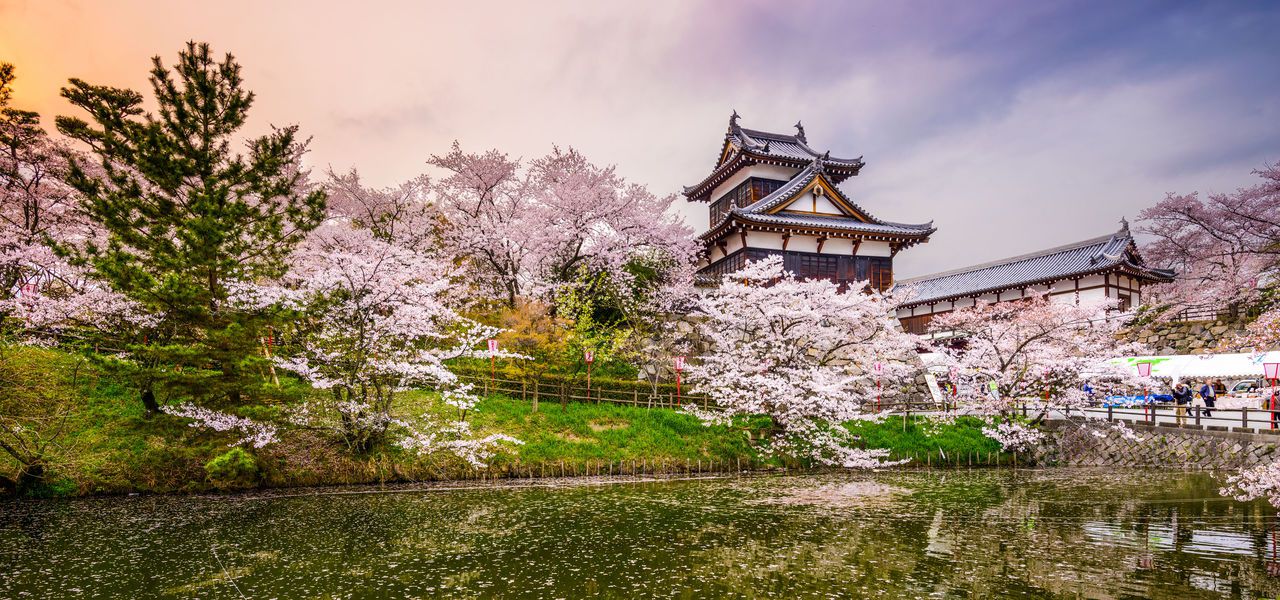

“If I were asked to explain the Japanese spirit, I would say it is wild cherry blossoms glowing in the morning sun.” — Motoori Norinaga (1730-1801)
Japan’s seasons are as colourful and dazzling as Tokyo’s neon lights. Autumn is blazing red hues, summer is lush shades of green, winter is a blanket of white and spring is soft shades of pink bursting from the country’s famous cherry blossom trees, also known as sakura.
The significance of sakura in Japanese culture is ingrained from ancient philosophical beliefs. The cherry blossom represents the fragility and splendour of life, a reminder that while overwhelmingly beautiful, it is also fleetingly short. From as early as the eighth century, elite imperial courtiers paused to appreciate the delicate beauty of the blushing flowers. Fast forward to modern-day Japan, with its skyscrapers and Shinkansen bullet trains and the cherry blossoms are no less revered.
Hanami is the tradition of welcoming spring, a practice that has been around since the court era, when the Japanese emperor lived lavishly, poetry was bountiful and literary classics were penned under the shade of the cherry blossom trees. Today, hanami is a more tumultuous affair with flowing sake, beer and food, as flocks of people frequent parks for picnics and frivolities amongst nature’s firework display.
Sakura begins to bloom in the south as early as January and sweeps north along Japan’s slim archipelago. The central islands see sakura around late March and early April, with the uppermost regions of the country following suit in early May.
The build-up to hanami can be almost overwhelming, with cherry blossom paraphernalia flooding stores and forecasters battling to predict the flowers' precise arrival date, as the weather patterns in the months leading up to sakura dictate the sometimes-temperamental calendar. If you want to ensure that your trip coincides with the season, you can usually guarantee a holiday in April will see you celebrating hanami.
And, as many people have impromptu picnics in their local parks, it is easy to join in. Additionally, most cities offer hanami nature spots which allow you to pair normal sightseeing with outdoor picnics and walks through the cherry blossom gardens.
Don’t miss the expansive Ueno Park or Shinjuku Gyoen Park for a slightly quieter hanami experience. Both feature more than one thousand trees and many different varieties of blossom, and with plenty of space, it will be easy to find a spot for your picnic or walk. Nakameguro is the perfect spot for an evening stroll, offering a tree-lined canal lit up by lanterns and bustling with outdoor food and drinks stalls. In this image, you can see how the cherry blossom itself glows by the light of the lanterns come dusk.

Ueno Toshogu Shrine, Ueno Park
Japan’s historic city of Kyoto witnesses the biggest crowds throughout the brief hanami season. Its ornate temples, Shinto shrines and Zen gardens are sure to impress, however the best flower spots are Maruyama Park, the Kamu River and the bloom-filled Imperial Palace Park.

Heian Shrine in in Sakyō-ku, Kyoto
Osaka is one of Japan’s best cities for cherry blossom viewing. Kema Sakuranomiya Park's countless trees lining the riverbank make for gorgeous afternoon walks, while Osaka Castle’s double-moated grounds flush a stunning shade of pink throughout spring. Its wide lawns and castle tower lend themselves to a perfect backdrop for a picnic. And, with average temperatures of 20ºC in April, it's pleasant enough outdoors to stretch out and relax under the blooms.

Osaka Castle
Cherry blossom season is one of the busiest times of the year to travel to Japan, so we recommend booking as early as possible to ensure availability at sought-after accommodation. Be prepared for variable weather, as springtime in much of Japan can alternate between brilliant sun and chilly rain and wind, and especially if you are travelling with the goal of photographing the trees, be prepared with weather-proof camera accessories. You can enjoy the trees, whatever the weather, by visiting a traditional tea shop with a garden – sip freshly prepared brews while admiring the scenery. Taking the time to appreciate little moments like this is what makes hanami what is it – a festival celebrating beautiful, transient moments.